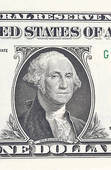 In Shakespeare’s Hamlet, Act 1, Scene 3, Polonius, the king’s chief minister, tells his son, Laertes, who will be leaving for the University of Paris, “Neither a borrower not a lender be, for a loan oft loses both itself and friend…”
In Shakespeare’s Hamlet, Act 1, Scene 3, Polonius, the king’s chief minister, tells his son, Laertes, who will be leaving for the University of Paris, “Neither a borrower not a lender be, for a loan oft loses both itself and friend…”
Still good advice, but is anyone heeding it?
- Current credit card debt: $841 billion and growing
- Current federal debt: $30,751,828,350,400 and growing
And then there’s student debt. Finds nerdwallet.com:
- Student borrowers owe almost $1.75 trillion in federal and private student loan debt.
- The average U.S, household with student debt owes $58,957.
- 45 million Americans have hold student loan debt—13.5% of us!
- Those 35 to 49 owe the most: more than $600 billion.
- The total outstanding student loan debt has hit $1.62 trillion.
- The total number of student loan borrowers: 43 million.
- The total outstanding private student loan debt: $131.10 billion
And there’s more…
Parents owe, too, via federal Parent PLUs loans to help them pay for their kids’ college education:
- Total Parent PLUS debt: $107.3 billion.
- Total number of Parent PLUS borrowers: 3.6 million.
- The average Parent Plus loan debt: $29,805.
Big numbers, for sure.
When it was my turn–yes, a long time ago–I chose a state university but as an out-of-stater. That first year, the tuition and fees amounted to $800; for in-state students, $400.(Really; I just looked it up.) Private colleges were out of our financial reach, so I never applied, raised as I was on the rule that, if you can’t afford it, you don’t buy/get it.
Meanwhile…
As of August 15, 1922, US News and World Report found that the average cost of college has more than doubled in the 21st century to $35,551 per year, including books, supplies, and daily living costs, with…
- The average in-state student paying $25,707 for one year at a public 4-year institution; for out-of-state students it’s $27,091.
- On average, students paying a total of $54,501 at private, nonprofit universities for one year, $37,641 of it on tuition and fees.
Enter Joe Biden…
On July 28, 2021, Speaker of the House Nancy Pelosi declared: “People think the President of the United States has the power for debt forgiveness. He does not. He can postpone, he can delay, but he does not have that power. That has to be an act of Congress. The President can’t do it, so that’s not even a discussion…”
And yet…
According to the U.S. Department of Education, almost 8 million student loan borrowers may well be on the receiving end of the government’s largesse, aka taxpayers. The Penn Wharton Budget Model estimates that the average cost of debt cancellation for taxpayers will be $2,085.59–$158.27 for the very lowest wage earners and up to $9,947.92 for those making $200,000+.
And so…
- Those borrowers making less than $125,000—or $250,000 for households–and who received Pell Grants may find their federal loan debt cancelled for up to $20,000.
- Those making less than $125,000—or $250,000 for households and who did not receive Pell Grants, may receive up to $10,000 toward their federal loan debts.
- “Relief is capped at outstanding debt. So, if you’re eligible for $20,000 in relief but your remaining balance is only $15,000, you get $15,000 in relief.
According to the University of Pennsylvania’s Wharton School, forgiving $10,000 per borrower will cost $298 billion this year alone. By 2031, if this policy continues annually, the bill will come to $329 billion—all borrowed from the federal government but not going back into its coffers.
It’ll have to be made up somehow…
Another hitch: Less than 32% of all those billions will help those in the two lowest income brackets; 42% will help those making more than $82,400 per year.
With thanks, Carol
This administration is the worst that my dad who is now 97 years old has ever seen in his lifetime.
They are trying very hard to destroy this country and will succeed unless we fight back and vote them out in November.
ALL of them out. And Media, write the real news for a change, it’s enough.
The spending spree scares me…